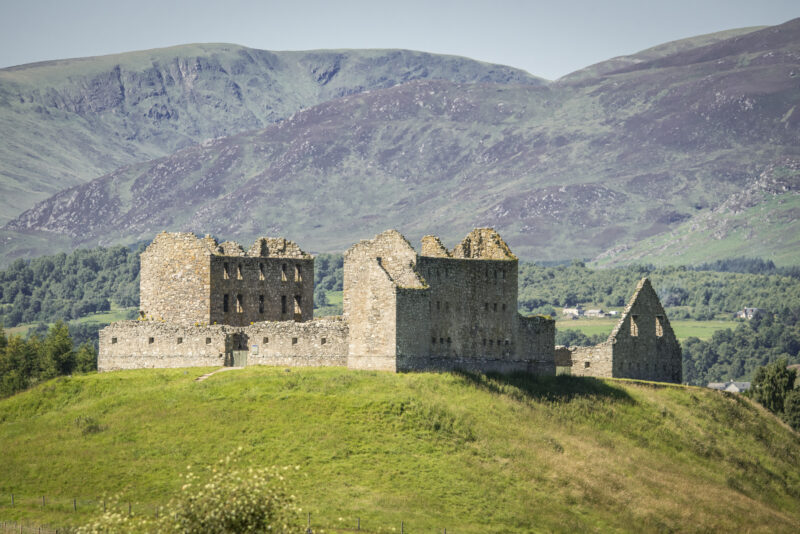A holiday to the Highlands can’t be truly complete without experiencing the sights, sounds – and smells – of 300 years of Scottish history. The Highland Folk Museum, operated by High Life Highland in Newtonmore is more than just a stop-off along the A9, it’s an opportunity to soak up the living history of mainland Britain’s first open-air museum.
Originally started in the 1930s by Dr Isabel Grant, the Highland Folk Museum has expanded over the decades and now includes over 30 traditional buildings from across the Highlands and Islands, which tell the story of how people have lived and worked in northern Scotland from the 1700s up to the mid-20th century.
From sawmills to shinty, coracles to clock-makers, there’s a whole host of buildings to explore. Here’s our pick of the crop, to make for a memorable day out.
Baile Gean Township
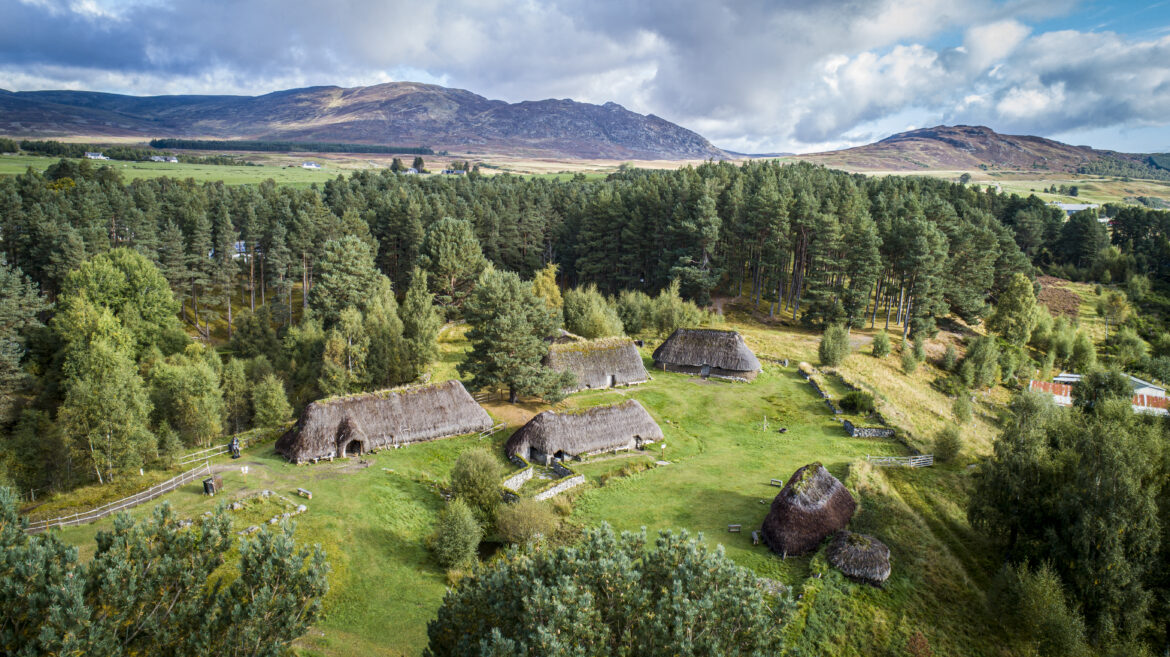
Make your way through the pinewoods and travel back in time to the 1730s…
Step inside the cruck-framed and heather thatched buildings, smell the peat smoke rising from the central hearth, and learn about rural tenant life in the era of the Jacobites.
The collection of turf and thatch buildings is based on the archaeological remains of Raitts, which was one of the principal townships in the Badenoch area, five miles north-east of the museum.
If the Scottish historical drama Outlander is your thing, then you won’t be disappointed to learn that this recreated 1730s township was used as a film location for Series One, Episode Five (Rent). The local Badenoch waulking group – Comhlan Luadh Bhàideanach – featured in the episode, carrying out the shrinking of the homespun and woven cloth whilst singing Gaelic folk songs.
Stop to take in the uninterrupted views across to the Cairngorms, and enjoy the costumed interpreters who bring Baile Gean (Township of Goodwill) to life with traditional crafts such as spinning and thatching. The Township really is an unmissable part of the museum.
Highland Cottage
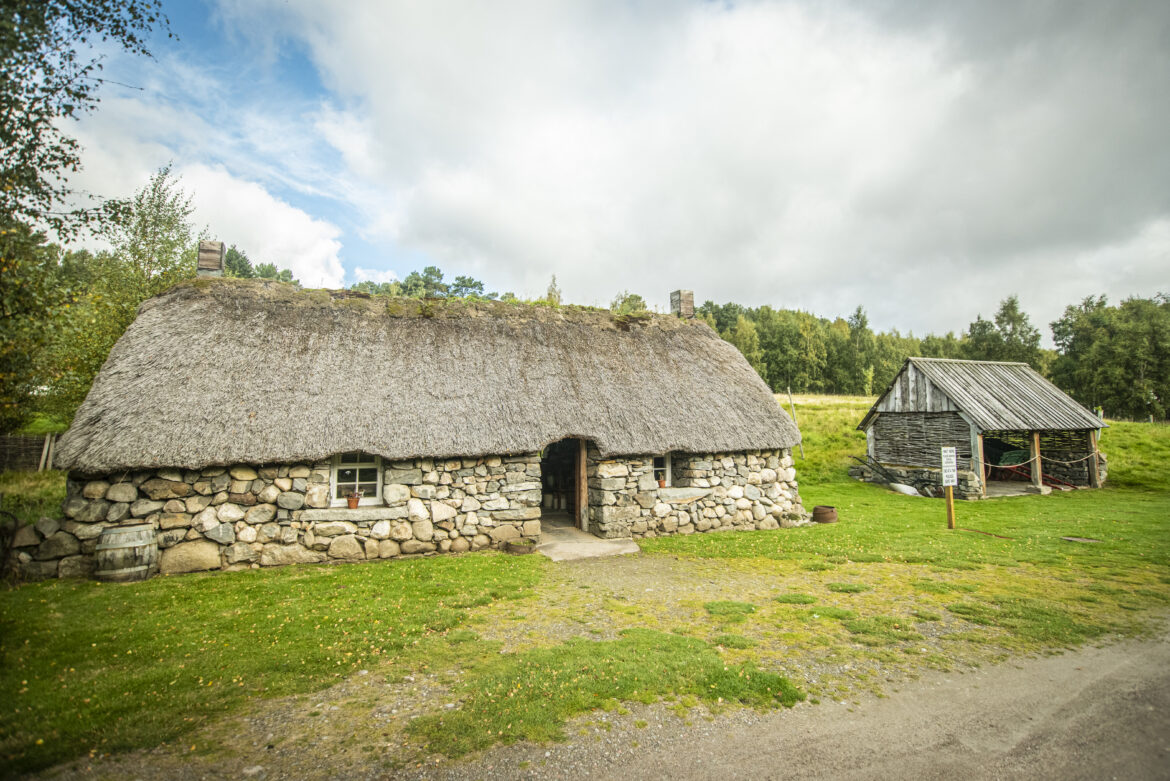
Head back to the centre of the museum site, and don’t forget to duck as you step into the Highland Cottage.
This style of building was common from the early 1800s onwards. Our Highland Cottage is presented to the 1890s. Based on a late 19th century photograph of a stone, timber and thatch dwelling in Grantown-on-Spey, this cottage was the next step up in modernity from the turf walled homes of the Township.
The multi-roomed building has a living space at one end, a “good room” at the other (both with fireplaces), and a larder in-between the two. Unlike some of the buildings of the Township, the residents wouldn’t have been sharing their home with their precious cattle; there is no byre inside this house.
By the late 1800s, the road and railway network had connected much of the Highlands, and mass-produced goods and materials were commonplace in homes. Look out for the blue and white pottery on the dressers, tin lanterns that helped to light the home, and the spinning wheel which allowed for faster production of homespun yarn.
Knockbain School
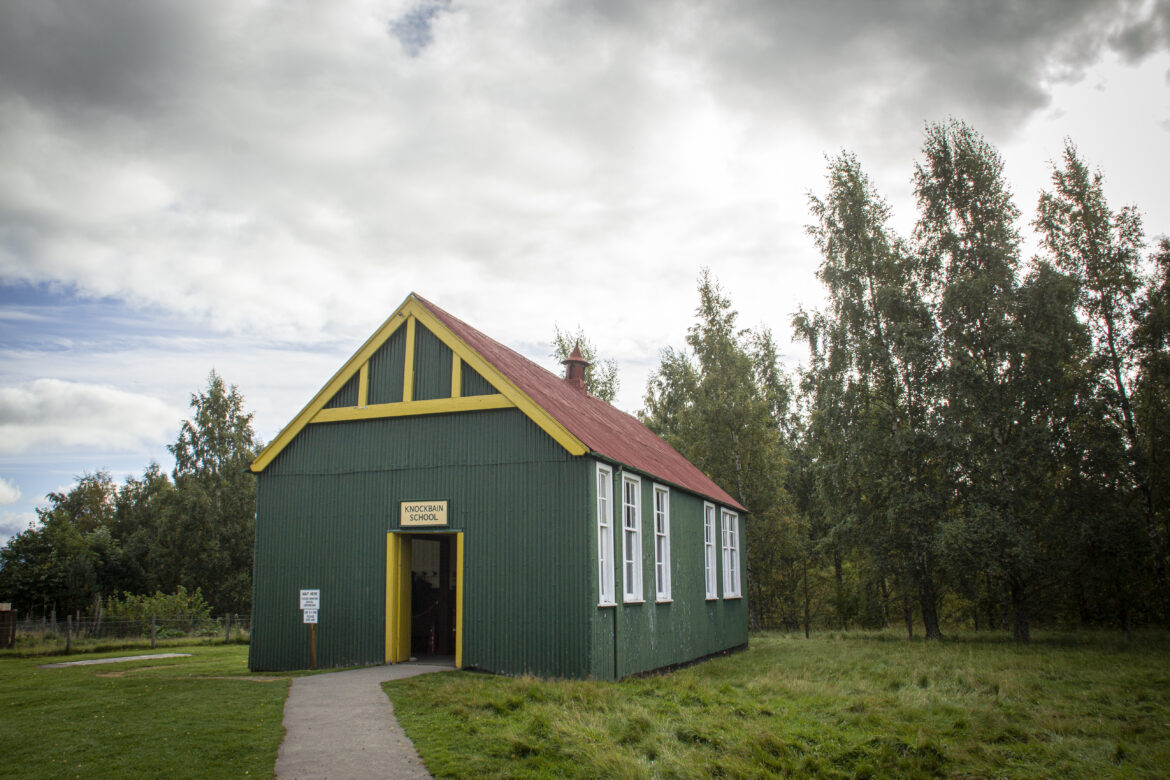
Experience school life from nearly a century ago in the “crinkly tin” Knockbain School building, relocated from the Kirkhill parish near Inverness.
Reading, writing and arithmetic was the order of the day in the 1930s, so take a seat at a desk and test out your handwriting skills with a dip pen and ink. Is it up to scratch? Playtime would have featured popular games such as the gird and cleek, a metal hoop which is pushed along the ground with an attached pole. Trickier than it sounds, as you’ll discover if you give it a go!
In the early 1900s, writing with your left hand, misbehaving or slipping into native Gaelic might have found you on the receiving end of the notorious Lochgelly tawse, or belt. You might witness the School Teacher giving a demonstration, although not on a visitor!
This prefabricated, corrugated iron (“crinkly tin”) building was constructed in 1925 as an addition to Knockbain School, to house an overspill of pupils from deprived areas of Glasgow. The children had been relocated to the Highlands after World War One to better their lot in life. In addition to the “3 Rs”, the pupils were also taught woodwork and domestic science, and carried out gardening in the adjoining School Garden.
Lochanhully House
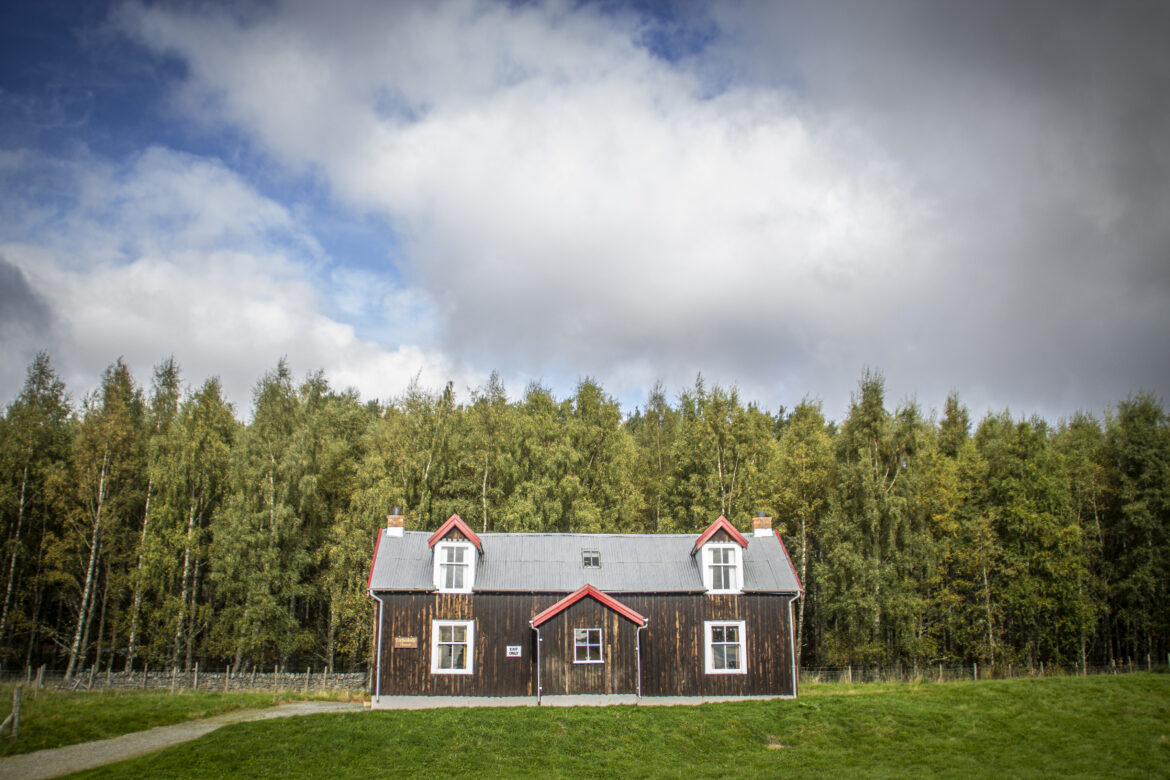
Furnished to the 1950s, this Highland family home is sure to bring back some memories of days gone by.
Lochanhully House was built in 1922 for shoemaker Duncan Rose and his wife Isabella, by their sons Joe and Rhynie. The house replaced an earlier stone family dwelling located in Lochanhully, a couple of miles east of the Cairngorms village of Carrbridge.
The two-storey house was constructed from timber milled from ninety pine trees that were purchased from the local Seafield estate. Joe lived in the house with his parents, up until his death in 1960. 50 years later, the Rose family donated the wooden building to the Highland Folk Museum to make way for a more modern family home. Along with the building came some of the original furniture such as the dresser made by Joe and Rhynie, and an iron bedstead, complete with chamber pot underneath!
The home is presented to the mid-20th century, with many now familiar mod-cons and luxuries such as an electric cooker, inside bathroom with plumbing, and a wireless. Take a walk through and see how many items you recognise from your own childhood days or family homes!
Aultlarie Croft

Keep on going to the east end of the museum site, and you’ll discover 1930s Highland farming down at the Aultlarie Croft. This collection of buildings includes the mid-19th century farm steading and stone croft house, which are original to the Newtonmore site. The croft house now features a traditional sweetie shop, so make sure to pop by and stock up on your favourites.
Learn about the farming implements and methods of the early 20th century, and explore buildings that tell the stories of crofting life, animal rearing, and food production.
Take a look around the old stable block, byres and dairy, and try your hand at being a milkmaid with placid cow Mhairi (please don’t attempt to milk one of the real cows, they have horns and you’ll know about it!).
The most recent addition to the Aultlarie Croft is the timber Smiddy, where you might be lucky enough to witness the forge in action, demonstrated on event days by museum volunteers. Other buildings at the croft include a railway halt for the onwards travel north and southwards of the farm produce, and a smoke house for the preservation of fish and meat.
There really is something for everyone at the Highland Folk Museum. Set within the green heart of Badenoch, a stroll through the site is a delight, no matter what the weather might be doing. With so much heritage and history of the Highlands on offer to explore, a visit to the museum will transport you to locations far and wide, and eras long since past.
The Highland Folk Museum is open every day from the start of April until the end of October.
You can step inside a selection of the historic buildings from the comfort of your own home, and virtually explore some of the collections at the Highland Folk Museum.
Entry to the museum is by donation.

The Badenoch The Storylands App is a new self-guided touring aid, showcasing the very best that local heritage has to offer.

Join our Mailing List
Sign up to get notified of the latest deals, news and all the latest information direct to your inbox.

